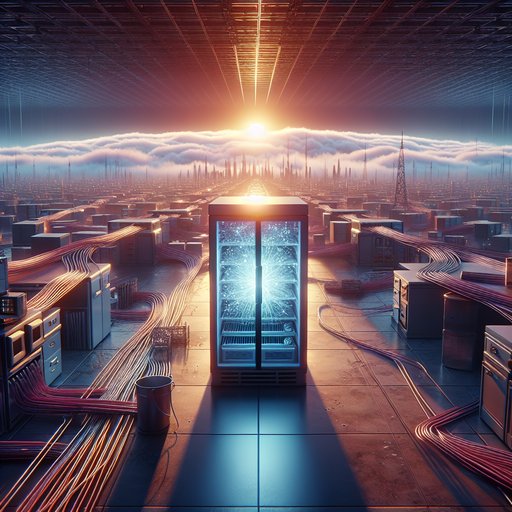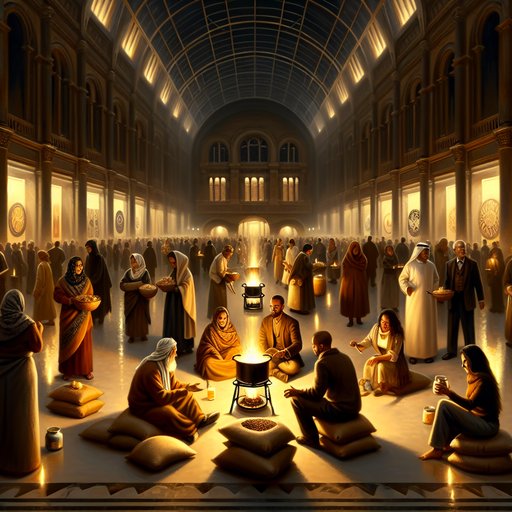
At sunrise, in a quiet room behind a tangle of street-level fiber conduits, a refrigerator-sized box exhales a steady mechanical breath. It does not store data. It makes keys out of light. Somewhere across town, its twin watches for photons that may never arrive, and in their absence, information appears—random, private, and, if physics holds, auditable down to the atom. Quantum communication has moved from whiteboard doodles to field trials, from a laboratory trick to an instrument that claims to know when an eavesdropper leans in. Its potential is not merely faster or stronger, but stranger: a network that refuses to keep secrets from its users, and refuses to keep secrets from itself.
The first sign that the link is alive is not a status light, but a rhythm. In the control room of a municipal network pilot, a monitor renders a jittery heartbeat of dots: sifted bits per second, sifted bits per second, then a lull. A cryocooler purrs as it keeps the single-photon detectors in their comfort zone, colder than a winter lake. Techs nudge patch cords and watch a counter that measures something unseen—the acknowledgment of light that went where it was meant to go, one photon at a time.
What they are making is not a message. It is the capacity for messages that no longer need to be trusted blindly. Before anyone is allowed to celebrate, someone asks the expensive question. If post-quantum cryptography lets institutions harden their existing systems with new math, why snake this city with specialized boxes that count ghosts?
The pilot’s champions talk about alarms. They say that with classical cryptography you can lose a secret and never know it, but with quantum key distribution you collect evidence of tampering as you go. Skeptics point to maintenance, vendor lock-in, and the physics that cannot be negotiated—losses in fiber, rain on satellite optics, the brute cost of keeping hardware cold. The argument is not new, only louder.
A decade ago, a Chinese satellite called Micius flung entangled pairs of photons across continents, showing that space could be a bridge where Earth-bound fiber failed. Earlier, in fluorescent-lit labs, researchers learned how to outwit their own devices, exposing detector vulnerabilities and inventing protocols that did not trust the very eyes that counted the light. The science matured not by promising unhackable systems, but by absorbing its own weaknesses, then building schemes that made those weaknesses legible. In demonstrations, the most convincing proof was often a drop in key rate at the precise moment someone tried to listen.
Now the venues are different. Hospitals that send imaging to off-site radiologists have hired consultants to map where a break in confidentiality would actually hurt, and how to measure the relief if a quantum alarm introduced friction into an attacker’s day. Grid operators imagine control centers connected by links that do not hide eavesdropping, so that isolation can be swift rather than theatrical. None of this rescues a sloppy password or a misconfigured server.
Yet the cadence of risk changes when the line itself protests. The pilot’s engineers do not promise perfect secrecy; they promise telemetry rooted in the physics of measurement. Between the city core and a research campus by the river, the distances are modest, but even modest distances gnaw at light. Every kilometer costs photons.
Without practical quantum repeaters—an ambition still on the horizon—the route detours through trusted cabinets, places that must be guarded because they terminate and regenerate keys. The team accepts this compromise with clear eyes, logging the exact points where trust is human rather than physical. They talk, too, about the day satellites join the mesh, carrying keys above fog and traffic, or when airborne relays bridge rivers that budget committees consider too wide. Policy arrives as paperwork before it arrives as practice.
Procurement officers ask how to audit a technology that produces randomness on demand. Regulators ask where the keys live and who can be accused if something goes awry. Standards bodies argue about whether quantum links should be treated as premium lines or as a new species entirely. There is also the geopolitical undertow: export controls that treat certain detectors like sensitive organs, and national strategies that whisper about resilience without revealing where the secrets are buried.
In meetings, the safest sentence is that quantum communication complements, rather than replaces, the new generation of cryptography based in math alone. There are subtler stakes hiding behind the cable trays. A quantum network demands a new kind of workforce—a mix of fiber techs who can read a constellation diagram by eye and cryogenics specialists who can diagnose a whisper in a vacuum pump. It demands foundries that can carve waveguides into chips and factories that can package lasers without the sneaky reflections that mimic eavesdroppers.
If the value consolidates in the same handful of urban cores that already enjoy dark fiber and data gravity, a quieter inequality grows: some places will get the kind of safety that notices when you are watched, and some will be told to update their software and hope. Hype tries to fill the gaps while the hardware catches up. There are glossy boxes sold with quantum stickers that route keys no differently than their cheaper cousins. The pilot avoids those by measuring itself in unfashionable units: secret key rate under rain, tolerance to a pinch in the conduit, time to switch to classical fallbacks without drama.
During one test, an engineer introduces a deliberate kink in the fiber. On-screen, the bits thin out like winter daylight. There is no siren. Instead, a slow, indisputable admission that the channel is sick, and a logbook note that says, in effect, this is what visibility looks like.
Once the habit of listening to physics is acquired, imagination wanders. Engineers speak about clock synchronization so precise that distant accelerators can behave as if they share a heartbeat. They sketch secure timing for stock exchanges that have learned to fear nanoseconds. They wonder whether a quantum link, extended by satellites, could give rural clinics a new kind of assurance when transmitting pathology slides.
Even the dreamers are careful with their verbs. They do not say transform so much as they say nudge and bind, as in nudging architectures toward accountability and binding distant actors to a shared, testable source of unpredictability. Quantum computing lurks at the margins of these conversations like weather at the edge of a window. If machines emerge that threaten today’s ciphers, the migration to new math will be urgent, and quantum communication will seem less like sparkle and more like infrastructure.
If those machines arrive slower, the patience demanded by delicate optics will have time to be rewarded. Either way, the idea is consistent: an internet that learns to measure its own honesty is an internet that complicates the life of anyone trying to lie quietly. On a calm night, the cryocoolers hum, the counters tick, and the city’s secrets negotiate their punctuation with the smallest unit of light. The pilot will not settle the debate about what deserves deployment and at what cost.
It will, in its small way, replace a stunt with a metric, a boast with a graph. In a year, the logs may show that nothing dramatic happened, and that will be a result too—evidence that drama would have registered if it had tried. The promise here is not invulnerability, but a different relationship to evidence and doubt. That is a subtle promise, hard to sell and easy to deride, but it is the one the machinery is built to keep.
And when the last technician kills the overheads and the only light is trapped inside glass, the network holds its breath, attentive to whether anyone else is breathing with it.












































